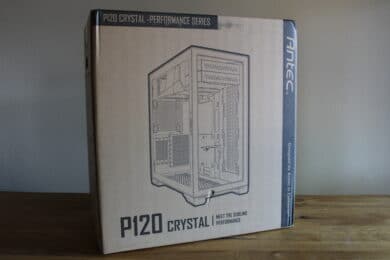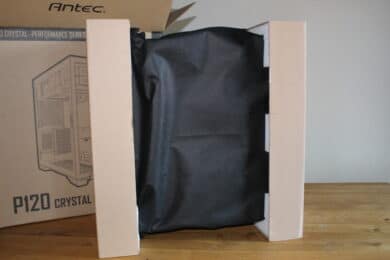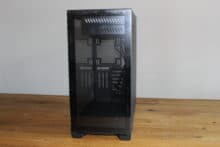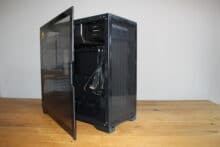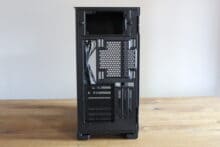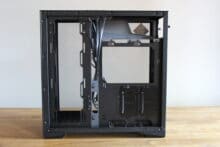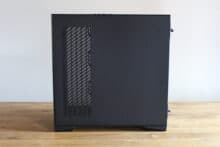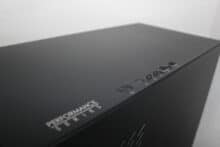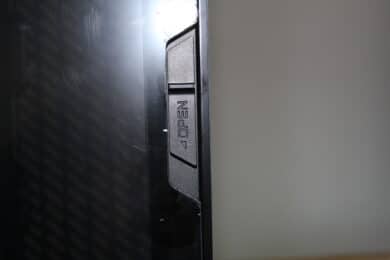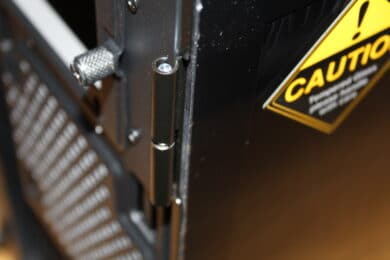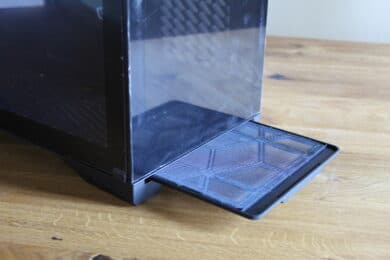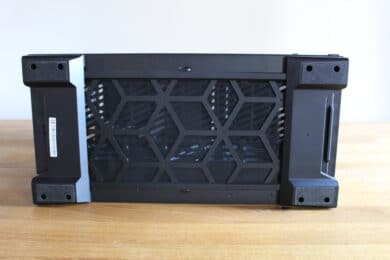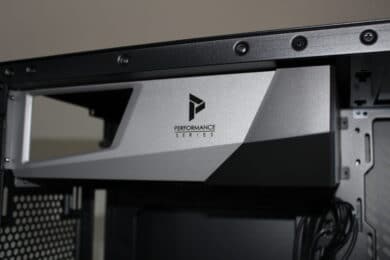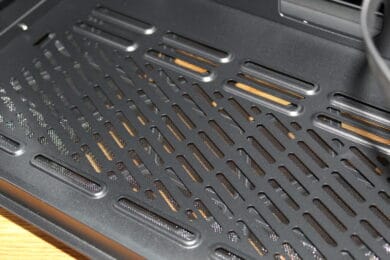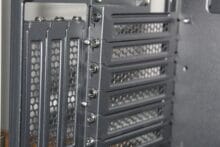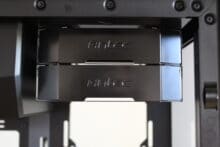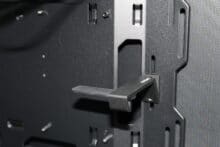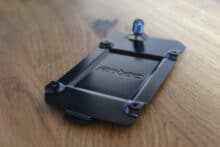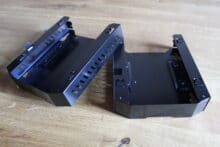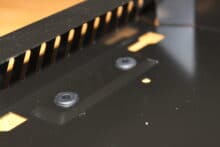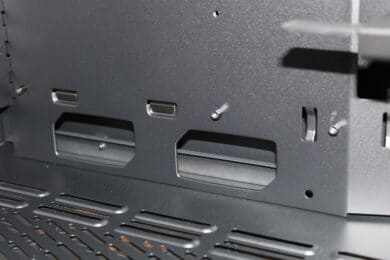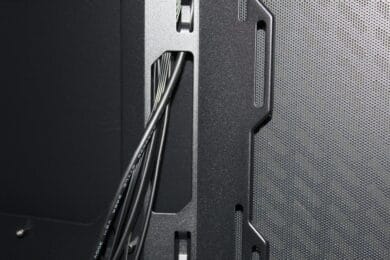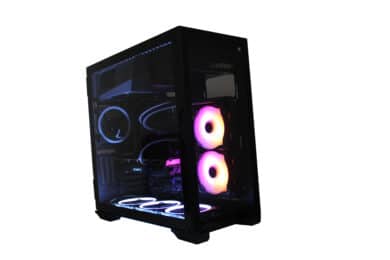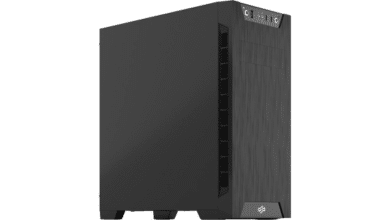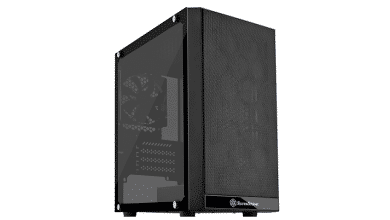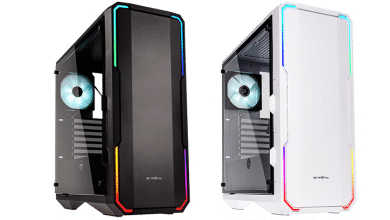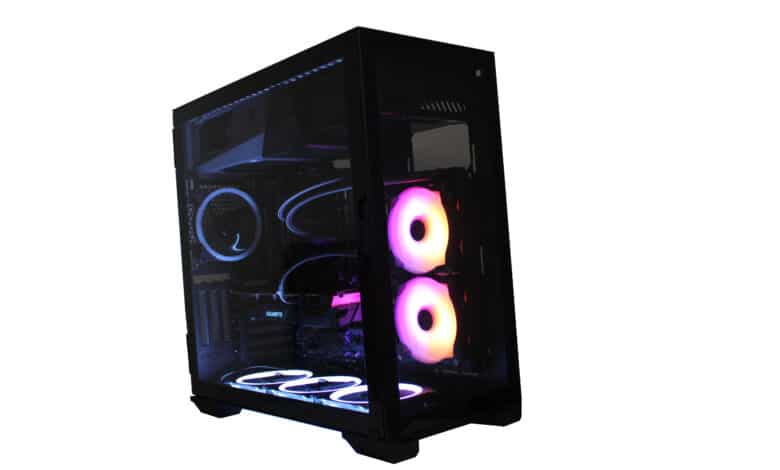
The company Antec, a well-known player in the case market, is also positioning itself in the showcase market with the P120 Crystal. In contrast to some clones of the Lian Li O11 Dynamic, Antec, however, brings along some ideas of its own and thus shows that it is still possible to bring in a breath of fresh air. How the case performs, you can find out here in the test.
Specifications
| Case type | ATX |
| Dimensions (LxHxW) | 234 x 485 x 476 mm |
| PCI-Slots | 7/3 (horizontal/vertical) |
| Available colors | black |
| Front connectors | 2x USB 3.0, HD-Audio |
| Drive bays | 3x 2.5″, 2x 3.5″ (1x replaceable by 2.5″) |
| Form factors | E-ATX, ATX, M-ATX, ITX |
| Fan | 3x 120/140mm (bottom), 3x 120mm (HDD cage must be removed) / 2x140mm (side), 1x 120/140mm (rear) |
| Radiators | 2x 360mm (bottom and side, HDD cage must be removed for side mounting), 1x 120/140 mm (rear) |
| Max. CPU cooler height | 185 mm |
| Max. graphic card length | 450 mm |
| Price | € 161.00 * |

Scope of delivery
The case comes, as usual, in a brown cardboard box. This is printed with a picture of the case and the specifications.
In general, one is not surprised here. Besides the necessary screws, there are velcro fasteners for cable management and a manual in the box. Unfortunately, there are no pre-installed fans – Features of this kind of cases are usually individually equipped with RGB fans. But as a little goodie you get a metal bracket to support the GPU – this bracket is already pre-installed in the case and makes sure that heavy graphics cards don’t bend unnecessarily and thus stress the PCIe slot of the mainboard.
Outside impression
As you would expect from a case of this type, the P120 Crystal lives up to its name and shines with tempered glass. In addition to the entire side, the front is also completely made of glass, thus offering a great deal of insight into the case interior. In contrast to other cases of this type, the front is made entirely of tempered glass, making it look even cleaner.
The ventilation slots for the side-mounted fans are located on the back of the case. These are neatly worked out and clean workmanship throughout.
The strong quality of workmanship is also noticeable on the glass side panel. This is mounted as a door and can be opened by pulling down a sliding bolt. The hinges make a very stable and solid impression. The door closes and opens without any sanding, scratching or the like. The plastic slider can be moved easily and looks visually chic.
The right side wall is made of steel and impresses especially with its stability. No material has been spared here; with a thickness of just under one millimeter, this is well above average. The entire panel is fastened to the body with knurled screws. In addition, a dust filter is located behind the ventilation slits, which is magnetically fixed.
A dust filter is also mounted on the bottom of the case. This can be easily pulled out to the front if necessary, e.g. to clean it. The mesh is quite fine, so most of the dust should stay outside the case. The filter is pushed into the feet of the case, these are additionally rubberized and screwed on tightly.
Inside impression
Inside, the first glance falls on the power supply slot. Untypical for the current time, it is located in the upper area. The matt surface gives it a very high quality look and includes a small cutout for a direct view of the power supply. Thus the whole case is a single chamber – in direct contrast to the O11 Dynamic and other showcase cases.
Due to the power supply unit in the upper area, there is no ventilation through the lid – but there is plenty of space for fans in the front, bottom and rear. The airflow possibilities are therefore quite convincing. In addition, this decision creates a case depth that allows for proper air coolers for the CPU – so you have the free choice of cooling.
On the rear side there is actually quite little space for cable management. Complex RGB cabling becomes very narrow and requires some effort, because there is neither a given cable routing nor many possibilities to store cables.
Next to two 2.5″ drive rails, there are two 3.5″ slides in the upper area. The carriages for 3.5″ HDDs are additionally rubberized to minimize vibrations transferred from the hard disks to the case. However, if you want to mount a 360 mm radiator, you have to remove them. The same applies to three 120 mm fans.
The openings for cables are available in convenient size and number. Unfortunately they are not rubberized, so that cables are visible behind the openings and you have to try to keep them invisible in addition to the lack of space.
System installation
The installation went without major incidents. However, minor points of criticism arose – mounting the coolers in the bottom area of the case requires that the feet be unscrewed. These block the screw holes. This is not a huge effort – but it was solved better with other cases. The fact that the door cannot be completely dismantled makes screwing even more difficult.
In addition, it actually becomes quite tight due to the aforementioned lack of space. But with a little rest and planning you can get everything accommodated.
Last but not least we measured the temperatures. A direct comparison shows the MetallicGear NEO Qube, a case with a similar layout. To ensure comparability, an identical test setup was used: A Ryzen 5 3600, mounted on a MSI B550 Tomahawk and cooled by a NZXT Kraken X73. The whole thing is installed with 16 GB RAM and a GIGABYTE RX 5600 XT GAMING OC. The case ventilation is guaranteed by some Wing Boost 3 ARGB and Inter-Tech RS-04. In both scenarios we have had the AiO water cooling blown out of the case.
| Case | CPU temperature | GPU temperature |
| Antec P120 Crystal, 50% case fan | 69°C | 48°C |
| Antec P120 Crystal, 100% case fan | 68°C | 46°C |
| MetallicGear NEO Qube, 50% case fan | 67°C | 47°C |
| MetallicGear NEO Qube, 100% case fan | 65°C | 46°C |
Since both cases ventilate the GPU from below, no difference was to be expected here. Since the MetallicGear case can transport a bit more fresh air into the case, the minimal difference in CPU temperature was also foreseeable – but the P120 Crystal still convinces us in terms of temperature.
Conclusion
The Antec P120 Crystal definitely shows that an O11 Dynamic is not the only design for a glass front. Antec offers a new development here, which is quite understandable and offers an interesting alternative.
In addition, the P120 Crystal convinces throughout with an above-average, clean workmanship and a pleasant modularity through individual HDD cages and SSD slides. The dust filters are easily accessible and simple to clean. In contrast to alternative cases of this kind, the case can also be easily filled with 140mm case fans and thus offers many possibilities.
Because of the smaller criticism in the system installation and the quite high price – at least for the fact that no fans are included – we gave the Gold-Award. However, the price for this type of case is actually still low – but the workmanship is all the more impressive. If you like the case optically, it is definitely recommendable – there are no relevant defects and it convinces in almost all areas.
Antec P120 Crystal
Workmanship
Structure
Features
Dampening
Cooling
Value for money
90/100
Nice showcase case with lots of tempered glass.



